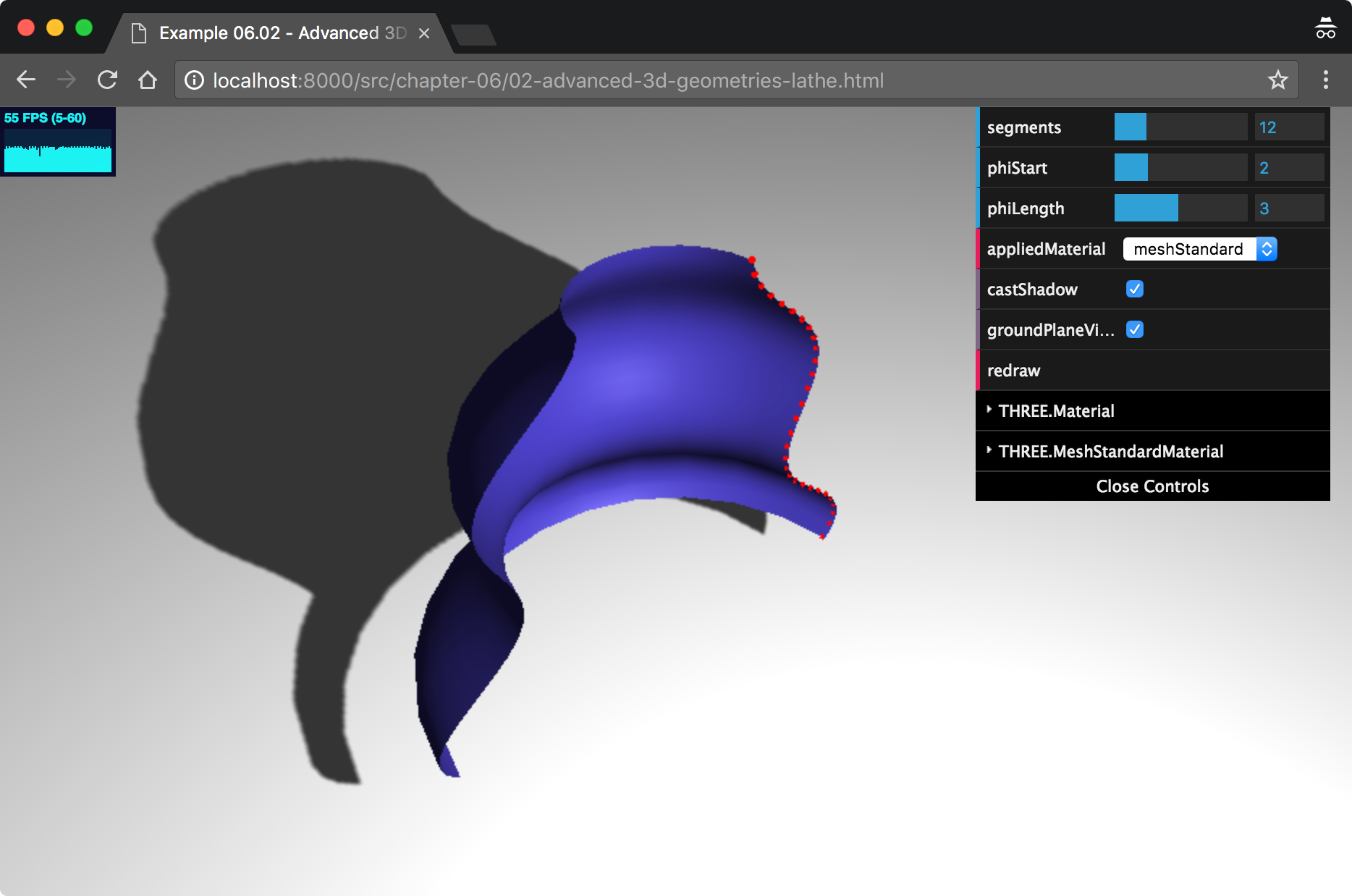THREE.LatheGeometry allows you to create shapes from a smooth curve. This curve is defined by a number of points (also called knots) and is most often called a spline. This spline is rotated around the central z axis of the object and results in vase-like and bell-like shapes. Once again, the easiest way to understand what THREE.LatheGeometry looks like is by looking at an example. This geometry is shown in 02-advanced-3d-geometries-lathe.html. The following screenshot taken from the example shows this geometry:

In the preceding screenshot, you can see the points used to create this geometry as a set of small red spheres. The positions of these points are passed in to THREE.LatheGeometry, together with a couple of other arguments. Before we look at all the arguments, let's look at the code used to create the individual...



